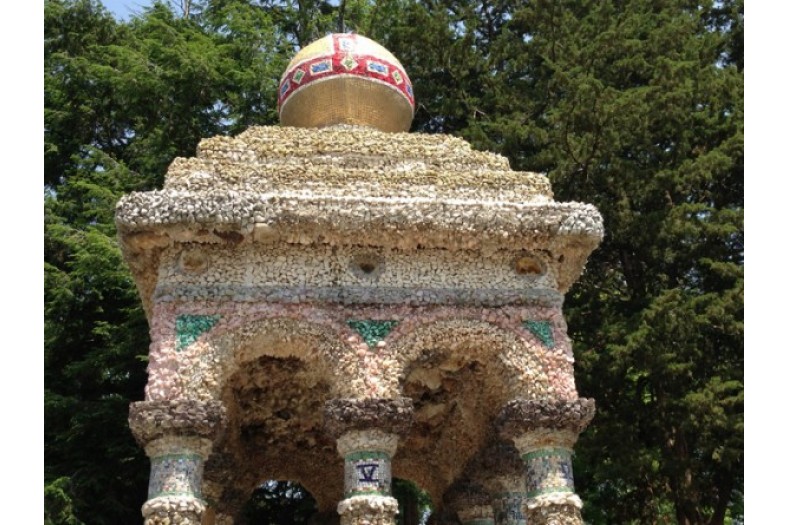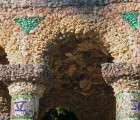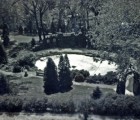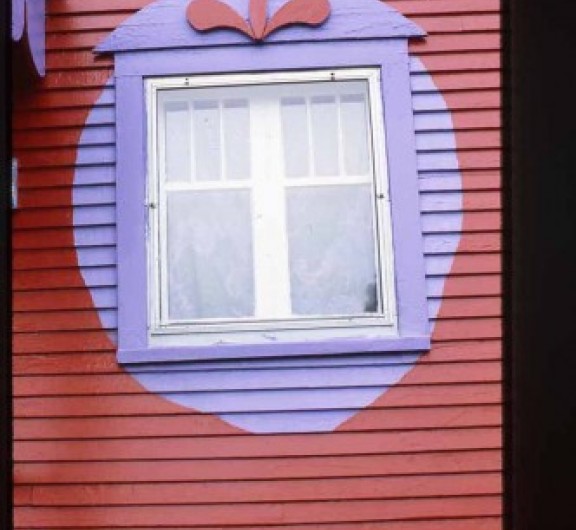Our Mother of Sorrows GrottoWilliam H. Lightner (1882-1968)
Extant
1330 Elmhurst Drive Northeast, Cedar Rapids, Iowa, 52402, United States
1929-1941
About the Artist/Site
Our Mother of Sorrows Grotto complex was built on the campus of Mount Mercy College by contractor William Lightner between 1929 and 1941. A professional boxer early in life as well as a skilled carpenter, William H. Lightner became a partner in his family’s building contractor business, Lightner Brothers Construction, and later president of the Master Builders of Iowa. He also served as the Iowa representative on the National Standardization Committee for the Hoover administration. Although Lightner also designed and built other significant structures in Iowa, Our Mother (Lady) of Sorrows Grotto was Lightner’s life’s work and his artistic masterpiece.
The Our Mother of Sorrows Grotto complex relates to the phenomenon of grotto building begun in Iowa by Father Paul Dobberstein, famed creator of the Grotto of the Redemption in West Bend. William Lightner’s work is both original in its design and firmly related to the work of Dobberstein and Father Mathias Wernerus with his Holy Ghost Shrine in Dickeyville, Wisconsin. Indeed, The Dickeyville Grotto was built after Lightner’s Grotto, and recent research by Dr. Susannah Kroeber, published in her doctoral dissertation, reveals that Wernerus consulted Lightner about his building techniques. The presence of three extensive Catholic devotional grotto environments in or bordering Iowa, all utilizing embellished concrete, inspired a number of builders in the upper Midwest region to create sculptural environments with similar materials. These sites reflect a strong tradition of creative expression within the contexts of home and landscape that is firmly rooted in the region, and contributes significantly to its cultural identity.
Lightner built the structures of reinforced concrete, and then masterfully embellished them with a range of stones, tile, and other materials. A focal point of the original complex was a Grotto Shrine to the Virgin Mary (no longer extant); radiating out from this monument, Lightner created two commanding Roman entry arches, an elaborate bridge, and a temple-like monument to the Ten Commandments, which he erected on an island in an on-site lagoon. The monuments are ornamented with phrases expressing Catholic devotion and mottos regarding the Virgin Mary as Our Mother of Sorrows. What began in 1929 as a single structure built in homage to his conversion to Catholicism (after meeting his wife-to-be) and a response to a request by the Sisters of Mercy became a twelve-year multi-structure obsession.
On his quest to build the shrine, Lightner travelled more than forty thousand miles throughout the United States and Mexico looking for building materials. He contacted suppliers around the world in search of more than three hundred unusual varieties of stone and other materials used in creating the structures; for example, the extensive smalti glass for the extensive mosaic work came from Italy. Over twelve hundred tons of stones were used, at a personal cost to Lightner exceeding forty thousand dollars. After an administrative change at the convent, however, the new managers were convinced they needed some of the land that had been leased to him for building, so sued Lightner to prevent him from building additional structures and to compel him finish what had already been started at the Grotto complex by 1941. The case went to the Supreme Court of Iowa and the new administrators prevailed. Though Lightner and the Sisters of Mercy settled on good terms, there is no doubt he would have continued building indefinitely had he won the lawsuit. The Grotto complex was dedicated in 1941 when building stopped.
After Lightner’s death in 1968, the Grotto and Lagoon fell into ruin as neither the college nor the Sisters (now dwindling in number) had the finances to maintain the site. The lagoon was drained in 1970. Erosion, lack of funding, and vandalism made it necessary to level the grotto's main structure in 1974. The four structures still standing reveal Lightner's visionary sense of design while they also provide a multitude of geological specimens, including Hawaiian coral, petrified wood, lapidolite, white quartz, blue azurite, and rose quartz from Colorado and the Black Hills of South Dakota.
A restoration project was undertaken in 2002 with a preservation grant from the Smithsonian Institution’s American Heritage Save Outdoor Sculpture (SOS!) Program. This resulted in some structural and cosmetic restoration of Grotto elements and re-established the lagoon as a pond with a smaller footprint. An interpretive plaque was also installed, providing viewers with information and vintage photographs of the site. In 2011 Mount Mercy University received an Iowa Arts Council Grant to restore the Warde Arch on the Grotto site, and in 2012-14 The ARTWORKS Program of the National Endowment for the Arts awarded the University a $40,000 matching restoration grant to complete restoration of the other structures on the site. The remaining structures and surrounding landscape are now beautifully designed.
The Mount Mercy University campus and the Our Mother of Sorrows Grotto are open to the public daily at no charge. For more information and archival images, films and community activities, visit www.mtmercy.edu/grotto.
Sources for this entry include:
John Beardsley, Gardens of Revelation (1995)
Lisa Stone and Don Howlett, Preservation Overview and Plan for William Lightner’s Our Mother of Sorrows Grotto (2012)
Susannah K. Kroeber, Emory University Ph.D. dissertation Signs of the Times: Context and Connection in Southern Conservative Evangelical Protestant and Midwestern Roman Catholic Grassroots Art Environments (2004)
Grotto Archives, Mount Mercy University’s Busse Library Special Collections Department
~Jane Gilmor and Lisa Stone
Contributors
SPACES Archives Holdings
1 folder: clippings, correspondence, images, 35mm slides
Related Documents
Map & Site Information
1330 Elmhurst Drive Northeast
Cedar Rapids, Iowa, 52402
us
Latitude/Longitude: 42.0023406 / -91.6519702
Nearby Environments

























































Post your comment
Comments
No one has commented on this page yet.